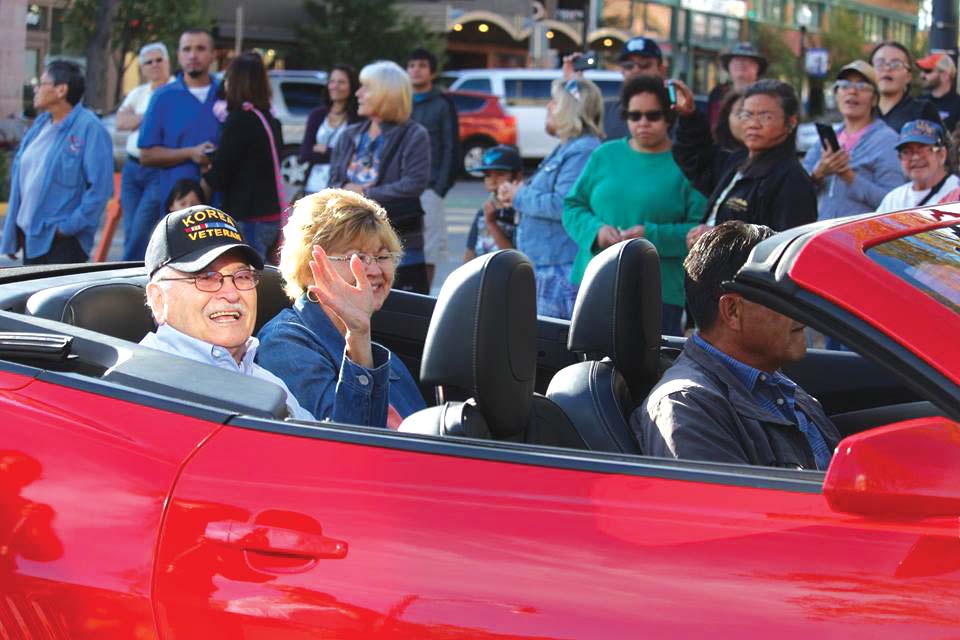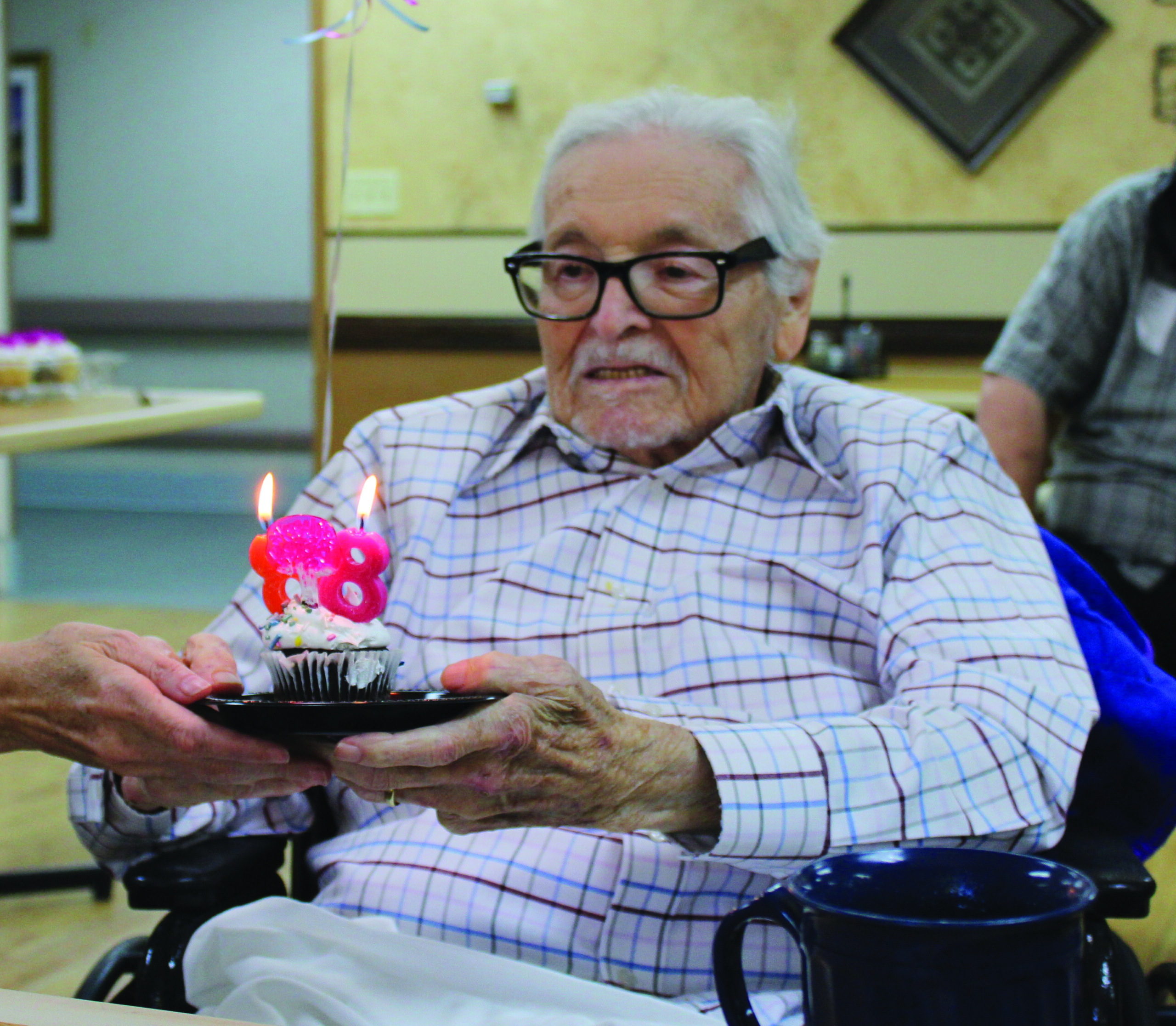He gave us ‘Native American Day’ in South Dakota

Tim and Jackie Giago, Grand Marshalls of the 2016 Native American Day Parade in downtown Rapid City.
RAPID CITY – Tim Giago put his last paper to bed at 8:44 a.m. Sunday, July 24, just a few days after he celebrated his 88th birthday. But those who were fortunate enough to share his life will not put his legacy to bed, the legacy of an Oglala Lakota man who went up against the powers that be to give us “Native American Day” in South Dakota.
Many times over the past 30 years, Giago shared the story behind the founding of Native American Day in South Dakota.
One day in early 1989 Giago, who was the editor and publisher of Lakota Times, set up an interview with Republican Governor George Mickelson.
There is an answer to one question Giago asked that stuck in his mind for a couple of months. He asked Mickelson, “What is the hardest part of your job as governor of South Dakota?”
Mickelson replied, “I am going to give you the same answer my father gave me when he was governor of South Dakota 40 years ago. I asked him that same question and he said ‘Trying to deal with the bad race relations between Indians and whites.’”
A few days later Giago said he ran into Birgil Kills Straight, a prominent Indian educator from his home town of Kyle. Kills Straight told him that he had organized a group of Lakota riders and they intended to take the exact trail taken by Si Tanka, Big Foot, as he fled from the Cheyenne River Sioux Indian Reservation to Pine Ridge after the assassination of Sitting Bull. According to oral historians Si Tanka and his followers were on their way to Strong Hold Table in the Badlands to seek refuge with the Oglala Lakota Ghost Dancers held up there.
Kills Straight said December 29, 1990 marked the 100th anniversary of the massacre of 300 Mnicoujou and Hunkpapa Lakota men, women and children at Wounded Knee and he and his riders wanted to make that ride in order to commemorate and honor Si Tanka and those who had died that day.
This brought back the comment made to Giago by Gov. Mickelson earlier that year. Giago thought that if the governor was sincere in wanting to improve race relations, he needed a catalyst to build upon. What better way to approach it than to honor those who were massacred at Wounded Knee? It was one of the most tragic days in the history of the Lakota and perhaps the very horror of that day should be the catalyst that would push Governor Mickelson into taking up the challenge Giago had in mind.
After speaking with Kills Straight, Giago immediately wrote an editorial mentioning Kills Straight’s intention to ride Big Foot’s trail and brought up the challenge to the governor to use this solemn occasion to honor those who were massacred that day by removing Columbus Day as a state holiday and replacing it with Native American Day as a gesture to honor the victims of Wounded Knee.
Mickelson called Giago and set up a meeting in Rapid City where they made the plans for Native American Day and how the Governor could lead it off by proclaiming a Year of Reconciliation between Indians and Whites.
Legislation was introduced when the state legislators met in January of 1990 and with the governor, Giago, his staff, and Yankton Sioux Tribal member Lynn Hart, lobbying hard for the Bill, it passed. And so, 1990 became The Year of Reconciliation and the first year that Native American Day was celebrated as a state holiday making South Dakota the first and only state in the Union to celebrate a day to honor its indigenous people.
Since that time, nine other states have joined South Dakota and made the change from Columbus Day to Native American Day, Minnesota (2016), Alaska (2017), North Carolina (2018), Wisconsin (2019), Michigan (2019), Maine (2019), and New Mexico (2019).
The first Native American Day celebration was held at Crazy Horse Memorial on October 8, 1990 and was sponsored by Ruth Ziokowski, the wife of Korczak, the sculptor of the monument. Gov. Mickelson and Giago were both in attendance. The Governor presented Giago with a plaque to memorialize the event. More than 1,200 people attended the celebration.

Tim Giago celebrating his 88th birthday with Native Sun News Today staff and his family. (Photo by Ernestine Anunkasan Hupa)
In 2015 the inaugural year of the Native American Day Parade was sponsored by many Rapid City businesses and Bruce Long Fox, Director of the Rural America Initiatives in Rapid City.
In 2016 Long Fox invited Giago to be the Grand Marshall of the Parade and he and his wife Jackie Giago rode in a convertible provided by Denny Menholt Chevrolet, driven by Delbert Haskell, a Cheyenne River Sioux Tribal member.
When Governor Mickelson spoke at that ceremony in 1990, he said, “We can’t turn back the clock. We can only turn to the future together. What we can do as leaders, both Native American and white, is teach others that we can change attitudes.”
Following the Governor, Giago said, “It is my hope that this day is just a small beginning for race relations in South Dakota. It is an event that all South Dakotans should be aware of and it is a perfect way to bring the races together.”
Annually, Crazy Horse Memorial hosts a Native Americans’ Day celebration. The event features hands-on activities, a program, Native American performers and the Educator of the Year award ceremony with a free buffalo feed.
(Contact Ernestine Anunkasan Hupa at canhunpigiwin@gmail.com)
The post He gave us ‘Native American Day’ in South Dakota first appeared on Native Sun News Today.
